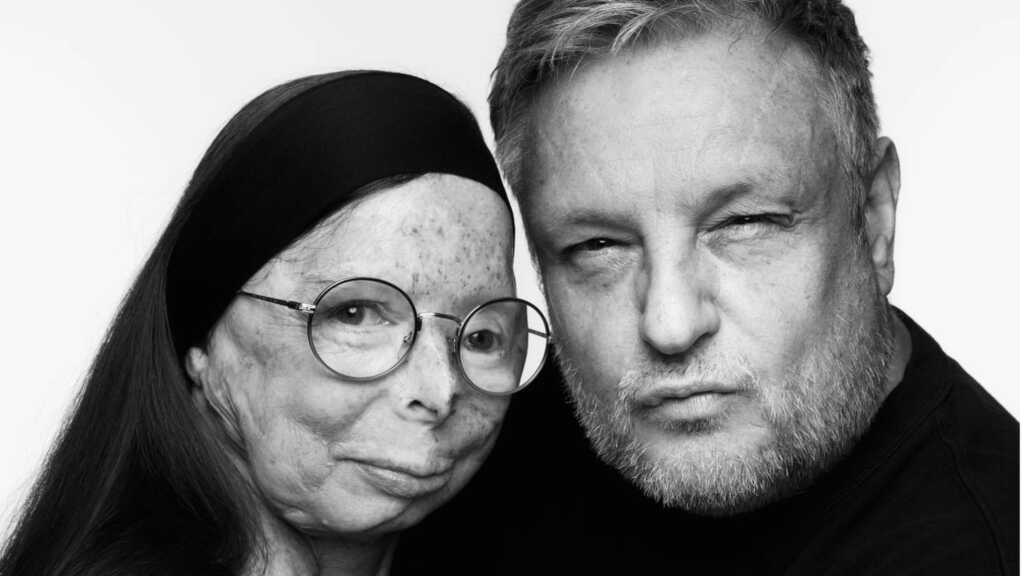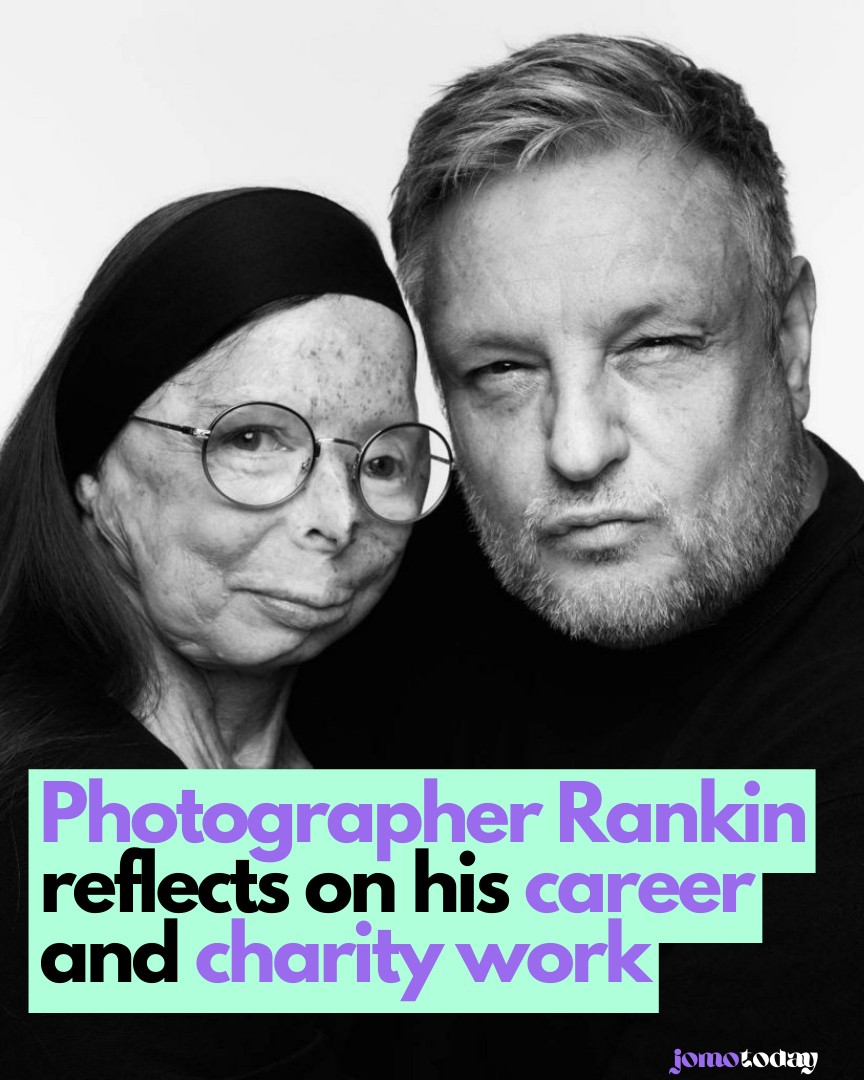Renowned photographer Rankin discusses his latest charity campaign, the beauty industry, and the memorable experience of making the King laugh, reflecting on his career and charity work.

Renowned photographer Rankin talks about his latest charity campaign, beauty and making the King laugh.
Over the past two decades, the renowned British photographer Rankin has captured the essence of numerous global icons, spanning from David Bowie to the late Queen Elizabeth II. While his wealth burgeoned through supermodel collaborations and fashion shoots, it is his commitment to charitable endeavors that remains the driving force.
Once labeled a ‘bad boy’ celebrity photographer during the Britpop era, Rankin has undergone a transformation since those heady days, particularly after embracing fatherhood. Reflecting on his journey from a working-class background to the pinnacles of fame in an interview with the BBC, the Glasgow-born artist acknowledged the need to rebalance his life after the birth of his child.
“When my kid was born and started to grow up, I was very concerned that I needed to correct that balance of having this incredible job where you do get paid extraordinary amounts of money to do what you love. You need to balance the art of giving something back.”
Rankin, whose full name is John Rankin Waddell, has leveraged his prominence to champion various charitable causes, spanning women’s health, environmental issues like combating plastic waste, and recognizing the contributions of NHS workers.
His latest philanthropic campaign is for the Acid Survivors Trust International (ASTi). Rankin’s images feature prominently in the book ‘Tear Couture,’ designed to draw attention to the persistent threat of acid attacks as a form of gender-based violence.
ASTi, with Princess Royal as its patron, estimates that over 10,000 acid attacks occur globally each year, predominantly targeting women and children. Particularly prevalent in South Asian countries with active garment and jewelry industries, anecdotal evidence suggests that attacks using hydrochloric, sulfuric, and nitric acids are more common where these substances are easily accessible or used in manufacturing processes.
Highlighting the severity of the issue, ASTi reported 710 acid attacks in England and Wales last year, a stark increase from 421 in 2021, as revealed through a Freedom of Information (FOI) request submitted to 43 police forces.
Rankin expressed that his involvement in the ASTi charity project contributes to his ongoing efforts to redefine conventional beauty standards. Patricia Lefranc, a 59-year-old Belgian activist and his model for the project, endured numerous surgeries following a sulfuric acid attack by an ex-lover. Photographing acid attack survivors is often challenging due to their hesitancy.
Rankin, however, finds beauty in the images of Patricia, emphasizing his goal to empower her through the photos. Reflecting on her courage in revealing the extent of her acid attack, he stated, “I want to collaborate with her to create something beautiful.” Acknowledging the potentially intimidating nature of being in front of the camera, Rankin emphasized his approach: “I’m not taking something from them; I’m creating something together with them. That’s how I approach every single photo I capture.”
Rankin acknowledges that his perception of beauty was heavily shaped by his upbringing, where he constantly photographed aesthetically pleasing individuals. However, since the early ’90s, he has actively challenged conventional beauty standards prevalent in the beauty and film industries. Instead, he sees it as his responsibility to embrace his own interpretation of beauty.
The 57-year-old photographer expresses a desire to capture images that defy expectations and capture people’s attention. He aims to redefine the traditional notions of beauty through his work.
Rankin, who does not take a personal fee for his charitable endeavors, opts for an expenses-based approach. Despite his success in various areas, including owning an ad agency and directing movies, photography remains his preferred medium. He emphasizes the importance of constantly reinventing oneself in the highly competitive and digitally driven industry, cautioning that maintaining relevance requires continuous effort and sacrifice. According to him, the challenges in the photography profession persist, especially with the ubiquity of smartphones equipped with cameras, making it essential for younger individuals to comprehend the evolving nature of the field.
Rankin has the distinction of capturing images of all the prominent royals, including an iconic photograph of Queen Elizabeth II during her Golden Jubilee. In a past interview, he mentioned putting in considerable effort to elicit a smile from her.
In the preceding year, he took photographs of King Charles III for the Big Issue magazine, dedicated to aiding the homeless. Rankin expressed that the experience was delightful, emphasizing the ease with which he could make the monarch laugh.
Highlighted here are several images from charity campaigns that Rankin holds dear.
“I have a deep appreciation for this picture as it exudes a resilience that may not be immediately apparent to everyone. What truly captivates me is the individual behind the Crown, rather than the Crown itself.
In my quest, I seek out the person who has lingered in the shadows, possessing that inner strength and a distinctive voice,” shared Rankin with the BBC. “Frankly, I believe we could benefit from having leaders of such caliber in our lives.”
Sokphal Din BEM, a survivor of the Cambodian genocide, had a unique way of gazing into the lens, almost as if he was comforting the audience, assuring them that it was acceptable to discuss such tragic experiences, according to Rankin in an interview with the Holocaust Day Memorial Trust.
In collaboration with the charity, Rankin created a series of five images: four featuring individuals who endured the Holocaust or genocide, and one capturing the teddy bear that accompanied John Hajdu MBE, a survivor of the Holocaust, throughout his time in the Budapest ghetto.
“In a 2010 interview with Oxfam, Rankin expressed his desire for his portraits to stand out from the conventional depictions of disaster zones that the West had become desensitized to. His portraiture style has always focused on bringing out the essence of individuals, encouraging them to share something genuine. Instead of capturing subjects in their physical surroundings, he opted for a stark white background. The intention was to draw attention to the expressions in their eyes and on their faces, emphasizing their humanity and creating a connection that he hoped viewers would notice and relate to.”
Rankin, speaking about his exhibition commemorating 75 years of NHS charities, emphasized the extensive support network in place. He highlighted their contributions to funding research, advancing technologies, providing accommodations and patient support, and offering additional services to enhance overall healthcare accessibility. Reflecting on his past experience working in the NHS, Rankin admitted to being unaware of the magnitude of support, describing the revelation as truly eye-opening.
Read More: Succession creator Jesse Armstrong rules out show spin-offs






Leave a Comment